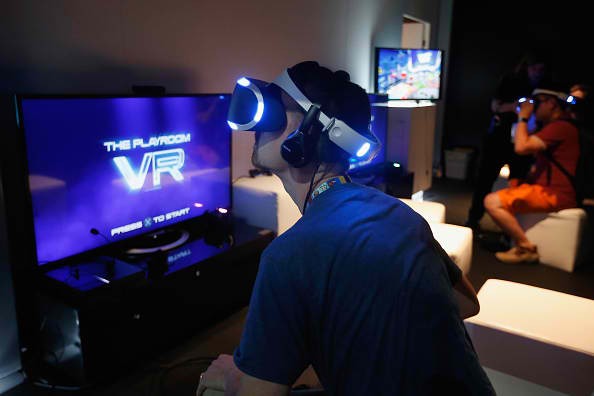New MoVR Technology Improves Wireless Virtual Reality Data Transmission
| Phenny Lynn Palec | | Nov 15, 2016 07:42 PM EST |
(Photo : Getty Images) MIT has introduced its latest technology called the MoVR, which allows VR headsets and computers to transmit and share data wirelessly.
The Massachusetts Institute of Technology's (MIT) Computer Science and Artificial Intelligence Lab has developed a new technology that allows virtual reality headsets and personal computers to transmit and share data wirelessly. Dubbed as MoVR, the new technology does not have any restriction like graphics fidelity or frame rate drops, a feature that is considered key when it comes to creating a truly immersive virtual reality experience.
Like Us on Facebook
MIT's MoVR technology uses millimeter wave technology, the same technology used by the next-generation 5G mobile networking experiments, according to Engadget. This type of data transmission technology can handle multiple gigabytes of bandwidth transfer per second. This is also way faster compared with the more common Wi-Fi or RF technologies, which usually bottleneck at around 6Gbps of transfer speed.
The millimeter wave technology can transmit high bandwidth data at break neck speed, but it has a couple of limitations as well. Experts pointed out that for the technology to fully achieve its theoretical speed, it has to have a clear line-of-sight between the two communicating devices, according to Tech Crunch.
MIT's Computer Science and Artificial Intelligence Lab was able to get around this limitation by using programmable mirrors that can help in detecting the direction of signals and reconfiguring the receiver in order to make sure that the signal is not interrupted.
The current version of the MoVR uses two antennas that are half the size of a credit card. The MIT CSAIL team is planning to further develop the technology and create a much smaller iteration of the device.
Tagsmovr, technology, Virtual Reality, VR, Data Transmission, movr, MIT
©2015 Chinatopix All rights reserved. Do not reproduce without permission
EDITOR'S PICKS
-

Did the Trump administration just announce plans for a trade war with ‘hostile’ China and Russia?
-

US Senate passes Taiwan travel bill slammed by China
-

As Yan Sihong’s family grieves, here are other Chinese students who went missing abroad. Some have never been found
-

Beijing blasts Western critics who ‘smear China’ with the term sharp power
-

China Envoy Seeks to Defuse Tensions With U.S. as a Trade War Brews
-

Singapore's Deputy PM Provides Bitcoin Vote of Confidence Amid China's Blanket Bans
-

China warns investors over risks in overseas virtual currency trading
-

Chinese government most trustworthy: survey
-

Kashima Antlers On Course For Back-To-Back Titles
MOST POPULAR
LATEST NEWS
Zhou Yongkang: China's Former Security Chief Sentenced to Life in Prison

China's former Chief of the Ministry of Public Security, Zhou Yongkang, has been given a life sentence after he was found guilty of abusing his office, bribery and deliberately ... Full Article
TRENDING STORY

China Pork Prices Expected to Stabilize As The Supplies Recover

Elephone P9000 Smartphone is now on Sale on Amazon India

There's a Big Chance Cliffhangers Won't Still Be Resolved When Grey's Anatomy Season 13 Returns

Supreme Court Ruled on Samsung vs Apple Dispute for Patent Infringement

Microsoft Surface Pro 5 Rumors and Release Date: What is the Latest?














